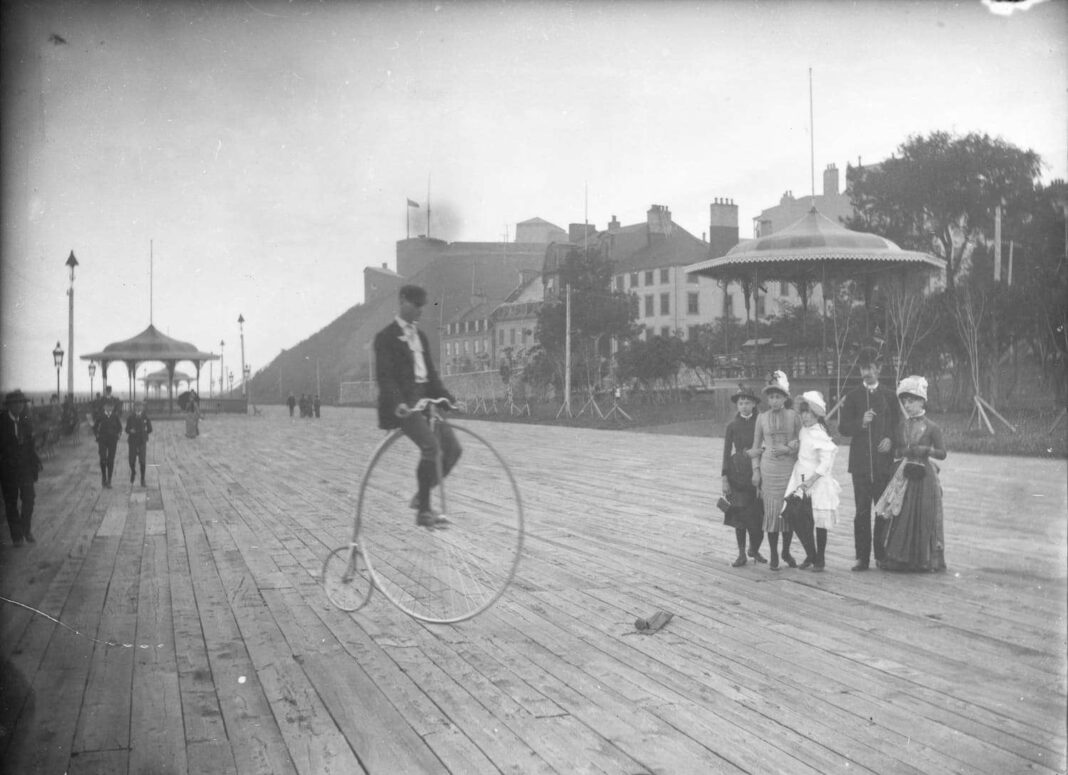Quebec City’s tourism, rooted in over a century of history, draws visitors with its old-world charm and rich heritage. Early tourist guides, primarily in English, catered to American travelers, highlighting Quebec’s Francophone and Catholic traditions. Key attractions like Dufferin Terrace and the Château Frontenac emerged in the late 19th century, symbolizing the city’s appeal. Additionally, military history and garden cemeteries offered insights into Quebec’s past, contributing to its status as a significant tourist destination.
Exploring Quebec’s Historic Tourism
Tourism in Quebec City is steeped in history, stretching back over a century! The city has captivated international visitors with its enchanting old-world charm. The earliest known tourist guides from Quebec date back to 1829, marking the beginning of a fascinating journey that would see the rise of tourism publications in the latter half of the 19th century. This surge in popularity coincided with the emergence of the bourgeois class, which had the leisure and financial means to indulge in travel.
These tourist guides primarily targeted outsiders, often written in English to cater to the significant American tourist presence. A notable example is The Hand-Book of Quebec (1850), which explicitly dedicates itself “to the Bostonians,” showcasing the influx of visitors from the United States during that time.
The Allure of Old Quebec
As the years progressed, the portrayal of Quebec in these guides increasingly emphasized its historical roots. The authors painted a picture of Quebec as a traditional Francophone and Catholic society, highlighting its rich heritage. With its well-preserved fortifications and remnants from the early days of French colonization in North America, Old Quebec stands as the “cradle of French America,” offering travelers an authentic glimpse into the remnants of New France dating back to the 17th century. This unique allure has drawn countless international visitors, significantly contributing to the city’s economic vitality, particularly as the shipbuilding industry began to decline in the 1870s.
In this article, we will delve into the tourist attractions that were popular in the picturesque city of Quebec and its surroundings during the late 19th century.
Key Attractions: Dufferin Terrace and Beyond
The Dufferin Terrace, along with the Château Frontenac and the statue of Samuel de Champlain, formed the vibrant tourist center of Old Quebec by the late 19th century. Visitors flocked to the terrace, captivated by the stunning views that underscored the historical significance of the site, chosen for the establishment of New France in the Saint Lawrence Valley.
Originally constructed in 1838 as Durham Terrace, this wooden promenade offered a breathtaking vista of the Saint Lawrence River and Pointe Lévy. It quickly became a beloved destination for locals and tourists alike, undergoing expansions in 1854 and again in 1879, when it was renamed Dufferin Terrace in honor of Lord Dufferin, the Governor of Canada from 1872 to 1878. Adjacent to the terrace were the Governors’ Garden and a public garden, where visitors could relax and admire the monument commemorating Wolfe and Montcalm, erected in 1828.
The Château Frontenac, completed in 1893, marked a pivotal moment in Quebec’s tourism development. As tourism grew, this iconic hotel became a symbol of the city, frequently featured on postcards from the turn of the 20th century. In 1898, a monument honoring Samuel de Champlain was unveiled on Cap-aux-Diamants, further enhancing the historical narrative that surrounded the area, reflecting the era’s fascination with public memorials.
Military Heritage and Garden Cemeteries
The military history of Quebec continues to intrigue visitors, much like it did during the 19th century. Tourist guides highlighted military monuments and battle sites, starting their tours at the battery of cannons near the Seminary and proceeding to the Saint-Jean Gate, showcasing the architectural beauty of the French Regime.
Tourists learned about the evolution of the fortifications, with guides detailing the modifications made to accommodate increased traffic. The Citadel remains a must-visit for history enthusiasts, offering breathtaking views over the Saint Lawrence River and an opportunity to connect with Quebec’s military past, including a visit to General Montgomery’s final resting place.
By the late 1850s, guides also began to promote excursions to garden cemeteries like Mount Hermon, Woodfield, and Belmont. These landscaped burial sites were designed not only as final resting places but also as serene retreats for the living, echoing the design philosophy of Paris’s Père-Lachaise cemetery. Celebrated for their natural beauty and architectural elegance, these cemeteries offered shaded paths and tranquil environments, inviting visitors to appreciate the harmonious blend of memorialization and relaxation.
